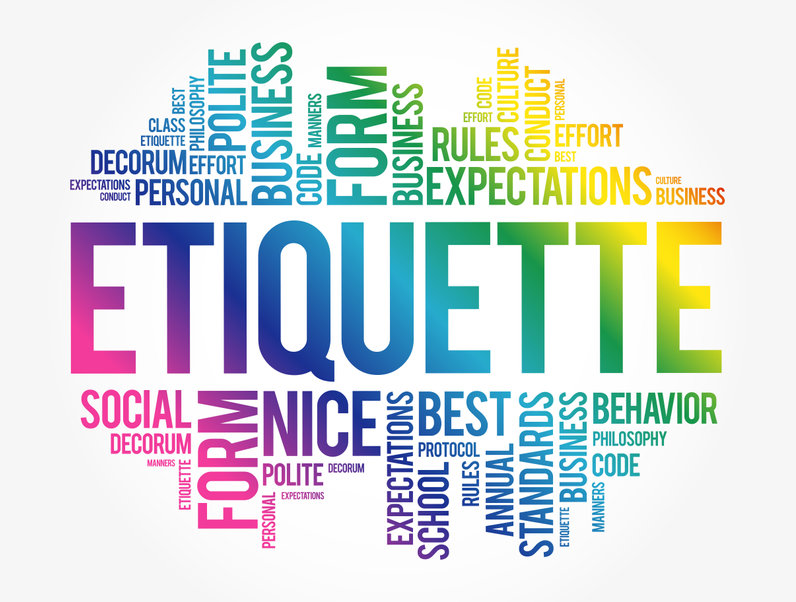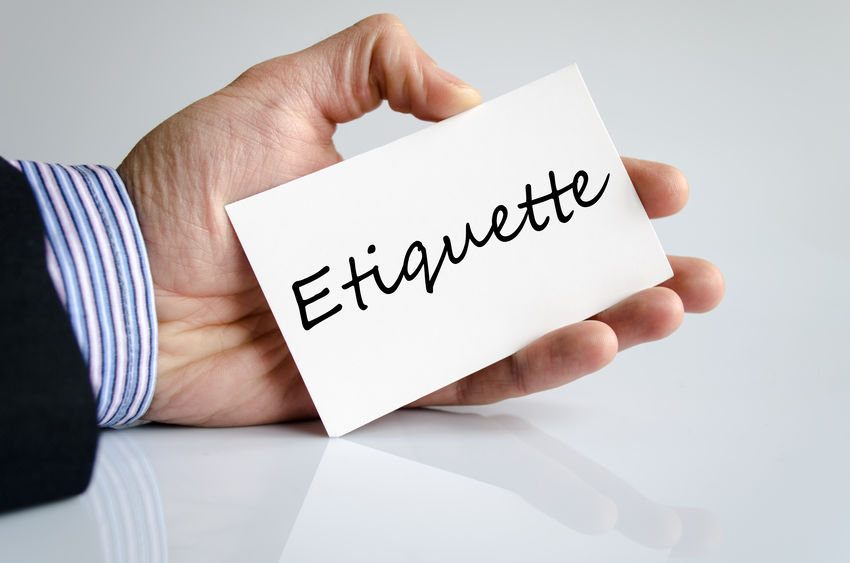Etiquette Evolves, But Its
Original Purpose Remains

Etiquette evolves as current culture practices and technology both change. It offers guidelines for respectful behavior based on common sense, fair play, politeness, and concern for others.
Yet, throughout etiquette’s evolution, the component of helping us remain recognizably respectful is always its foundation.
Etiquette Evolves with What, Where, When and How
Because our behavior adjusts to meet various situations and circumstances, so do our etiquette practices. This applies in a general sense as well as in relation to an immediate situation you find yourself in.
Here are some examples of how etiquette evolves to meet a particular encounter:
- In the not-so-distant past it was appropriate for women to stay seated when they were introduced. This difference with the treatment of men is no longer the case. What remains true is that properly introducing yourself and others is important.
- A man not shaking a woman’s hand unless she first offers it is outdated. The pandemic may have changed our willingness to shake hands, but most likely only temporarily. The art of human connection via a handshake is still important.
- It used to be that a man paid for meals and activities when on a date. Now, it is customary that the person who asks for the date picks up the tab.
- When a man and woman walk together on the street, it is no longer an expectation that the man walks on the side closest to the street. Today it’s more about the pedestrian rules of how to pass someone on a busy street and being respectful of others’ personal space.
- Making a toast does not need to involve champagne or wine. You can raise your glass regardless.
- Informal rules applying to weddings have changed, too. It used to be that a person had a year to send a wedding gift to a newly married couple. Now, because of online gift registries and other technology, it is most appropriate to send gifts prior to the wedding.
Why Etiquette?
Etiquette still gets a bad rap as being fussy and old-fashioned. It also comes with baggage associated with social superiority and as having nothing to do with everyday people.
But the world cannot get along without a basic set of rules of sociality. We, as fellow world citizens, have an expectation of living peaceably with those around us. To make this expectation a reality, we need guidelines that encourage respect from everyone.
It’s for this reason that no matter how much etiquette evolves, it will always embody the attitude of respect. And demeaning others is always excluded from etiquette.
Etiquette is an intriguing word! It embraces many roles and responsibilities that guide society. It involves following a moral code of conducting oneself, putting others at ease in your presence, being courteous, kind, and honest – even though the truth may not always be pleasant. It signifies honoring others and striving towards ethical behavior. Though the precise guidelines will change, intentionally choosing to know and observe etiquette practices will ingrain our desire for it.














